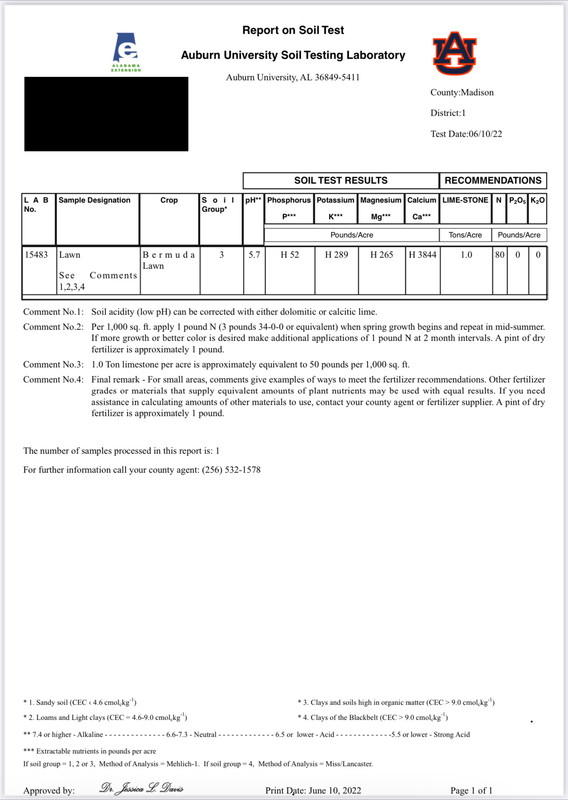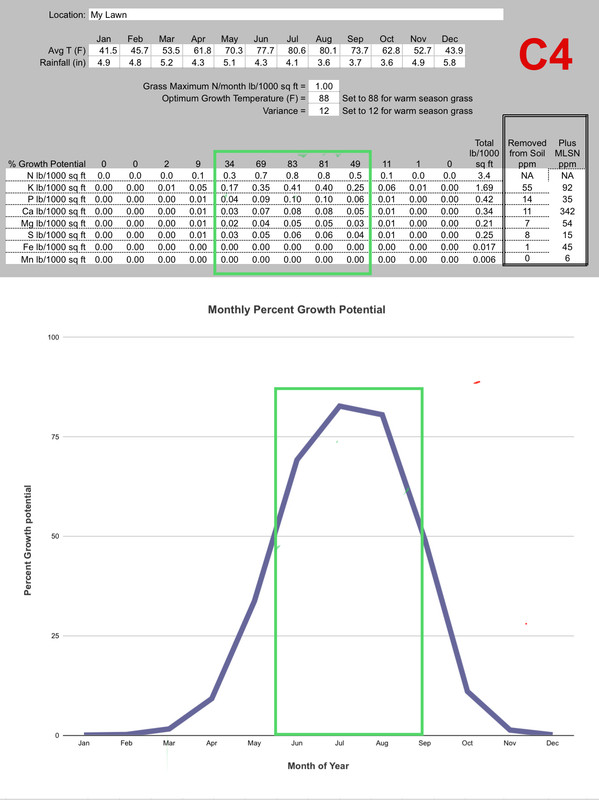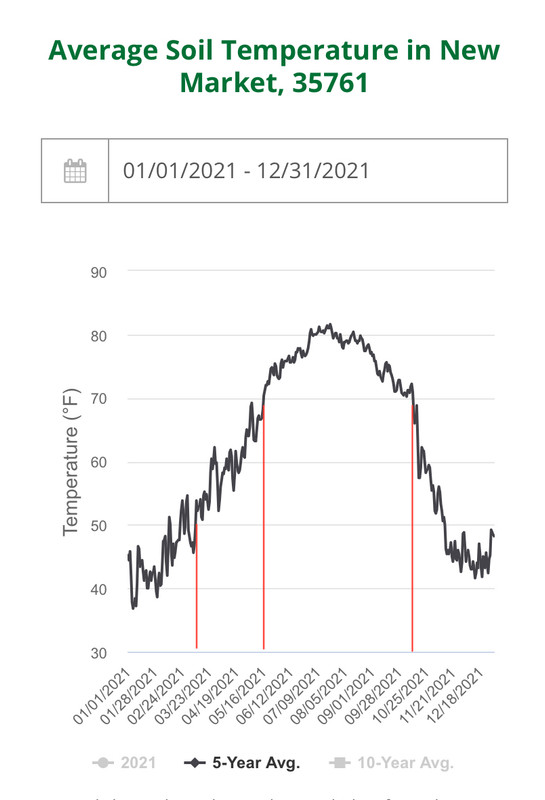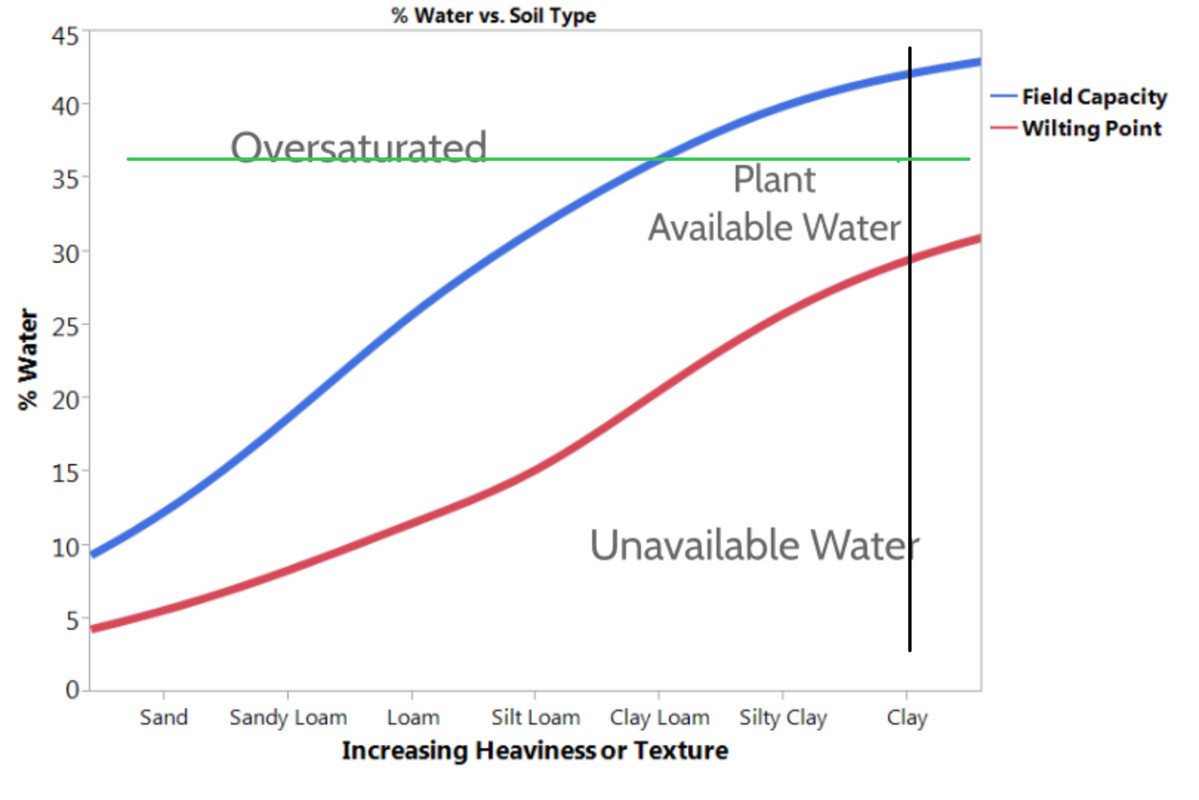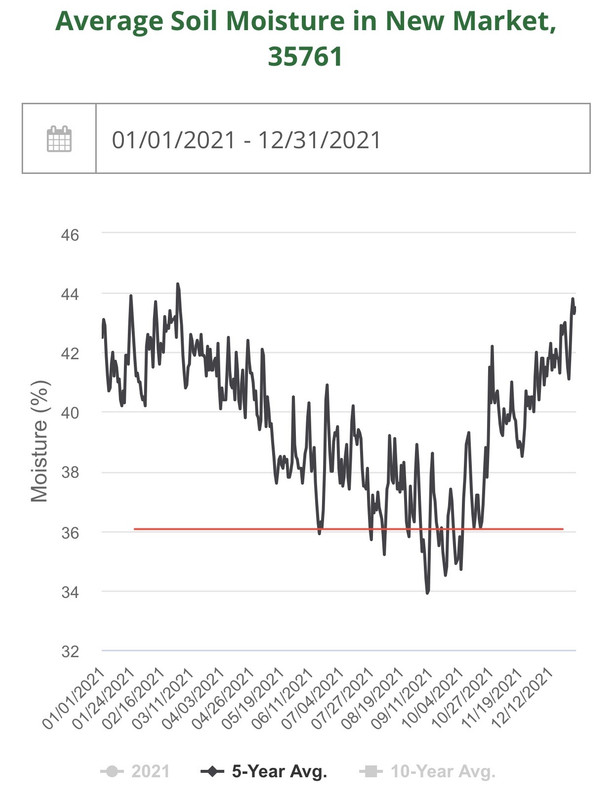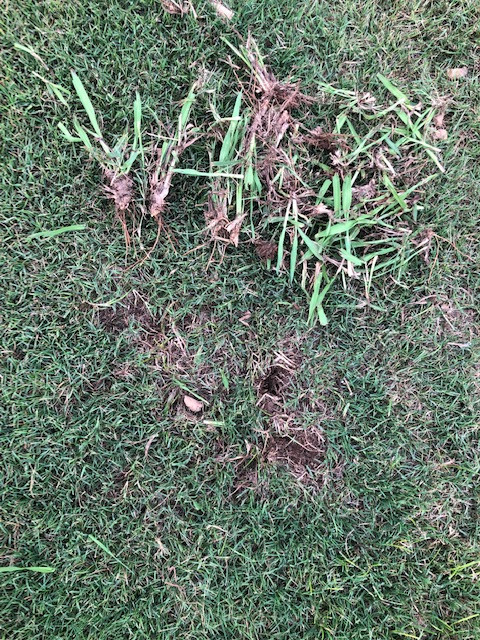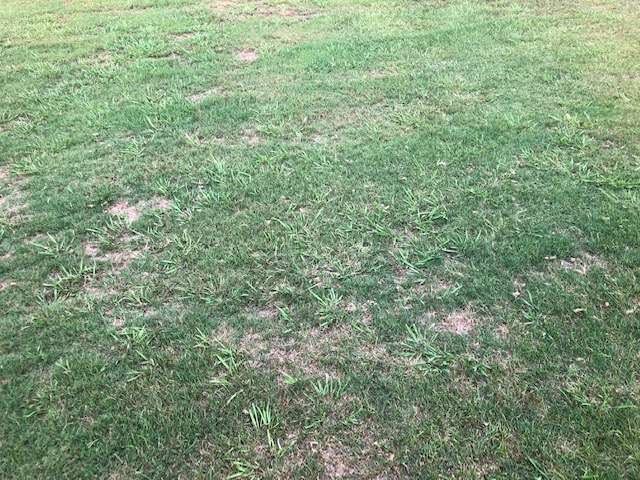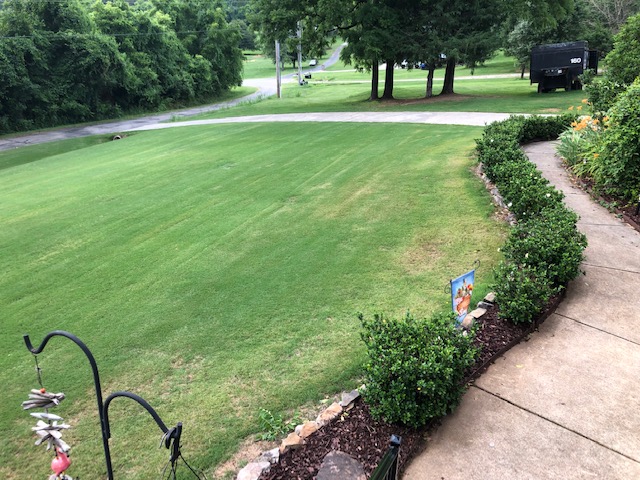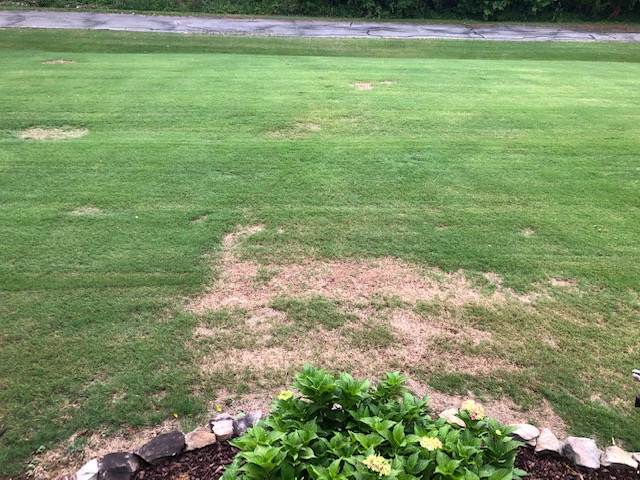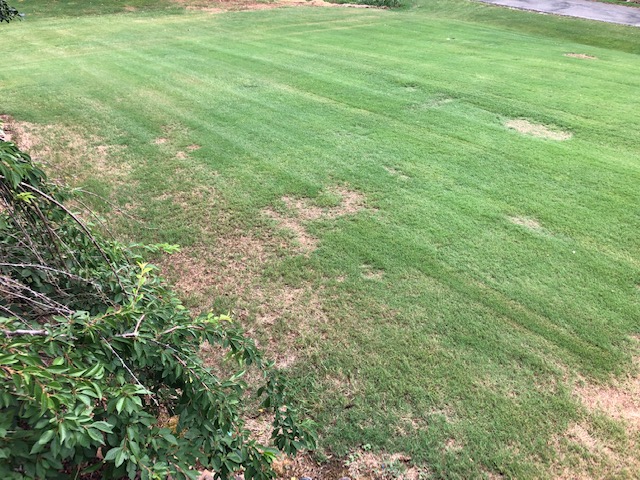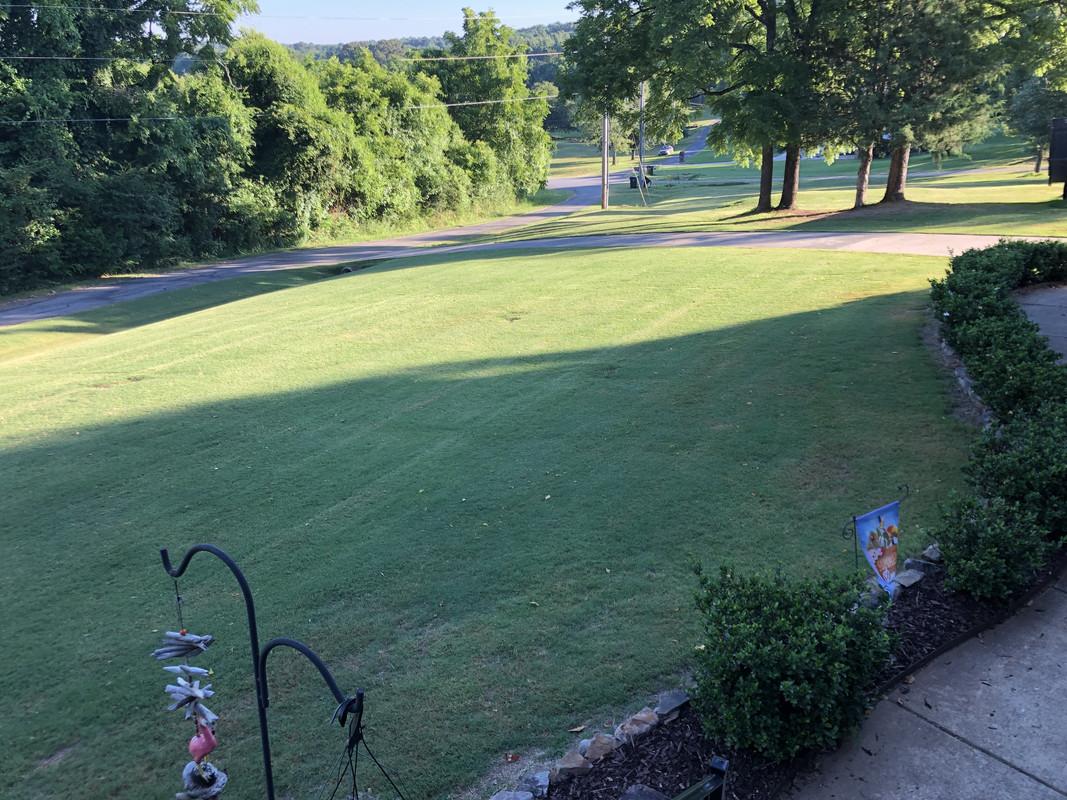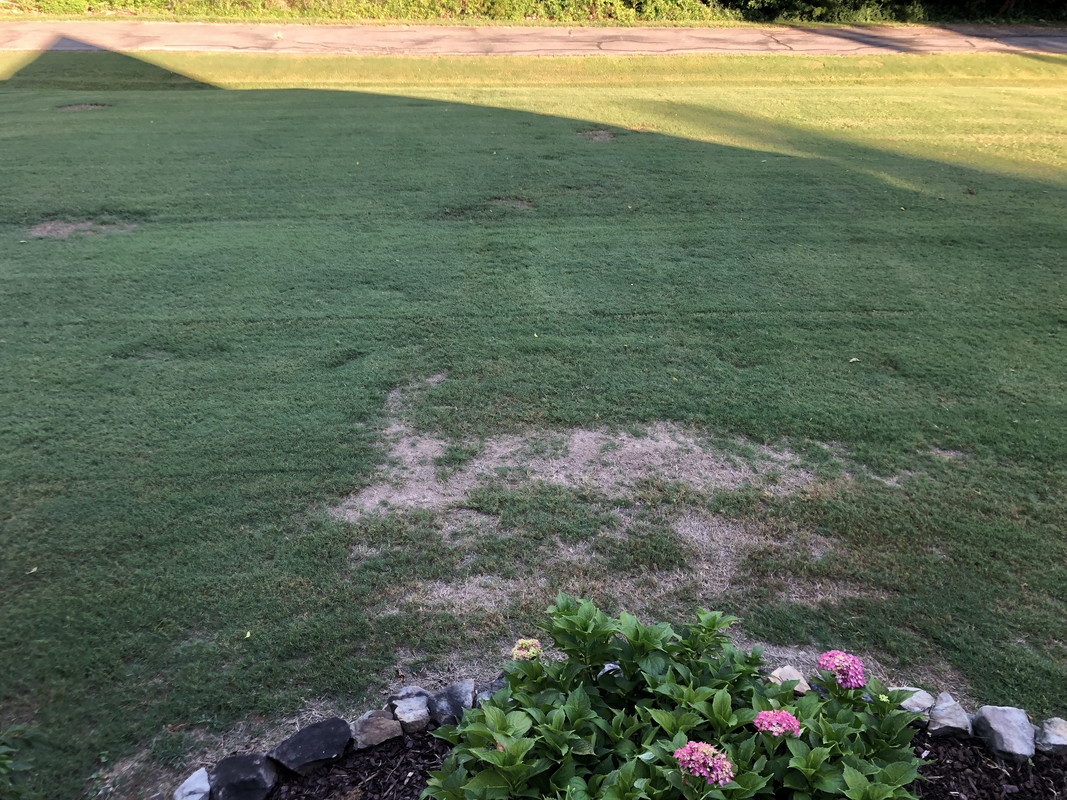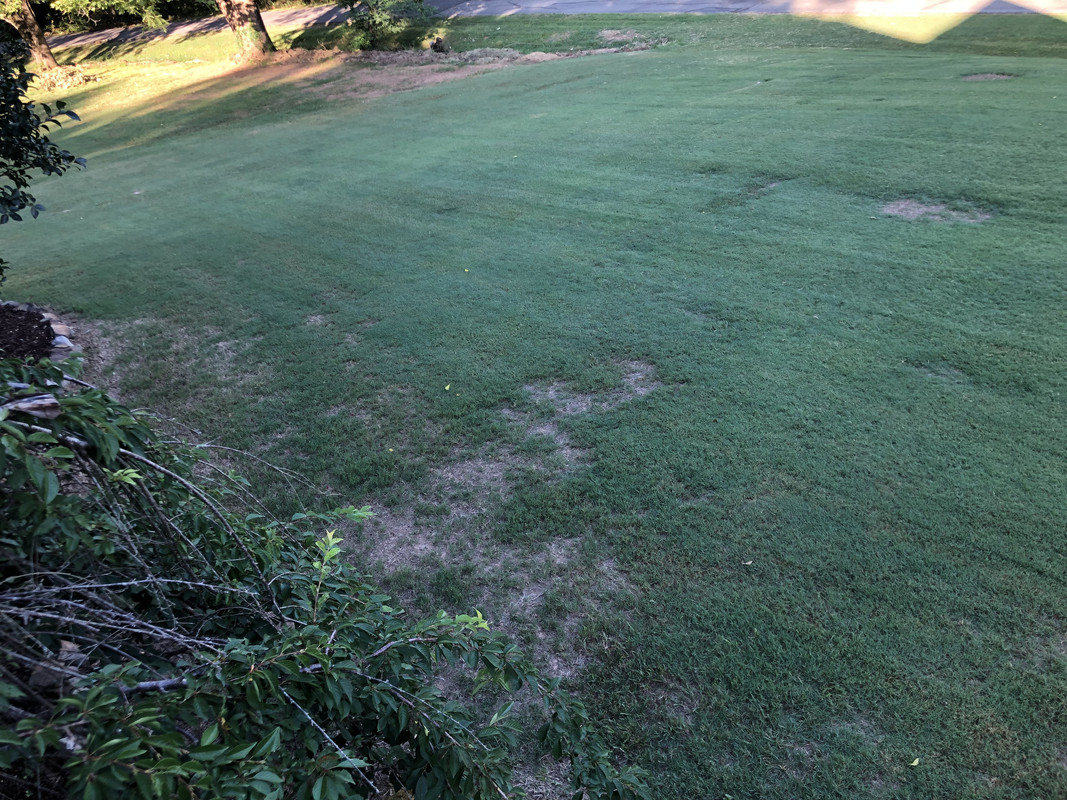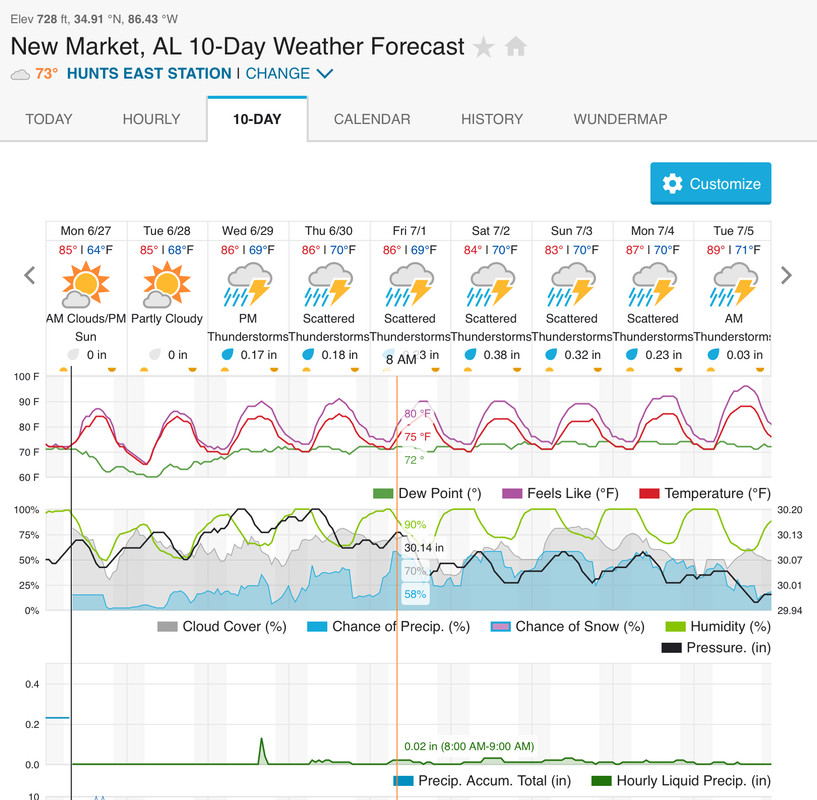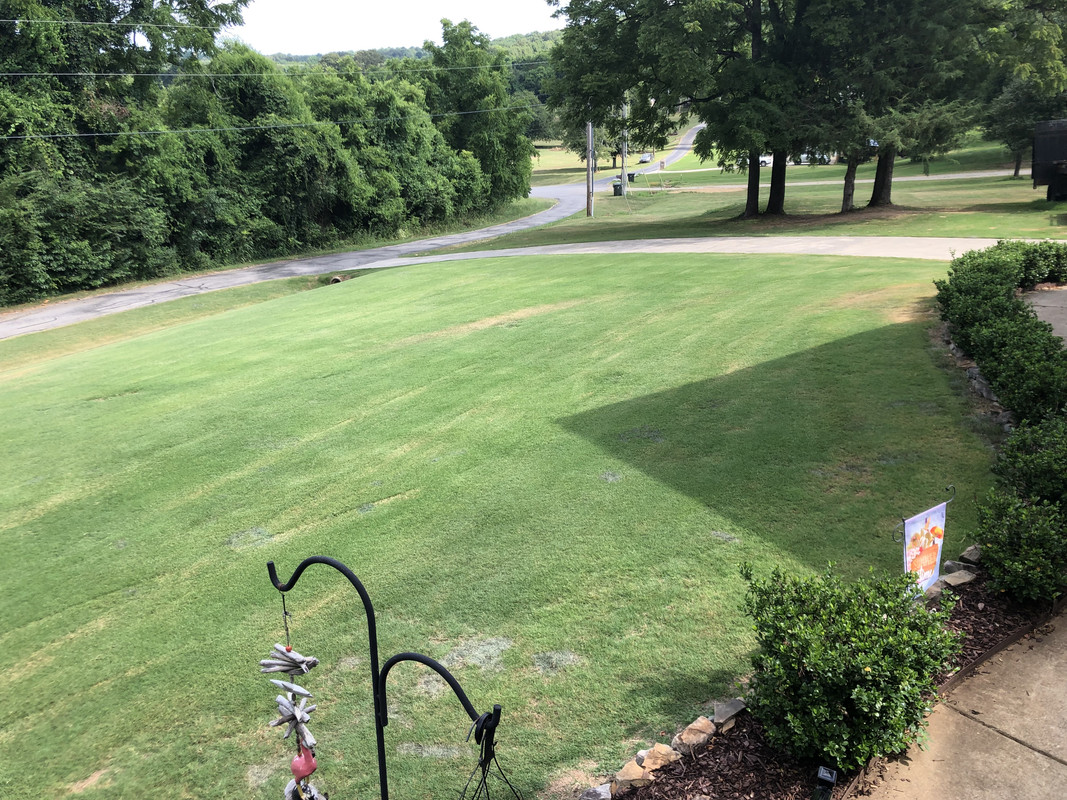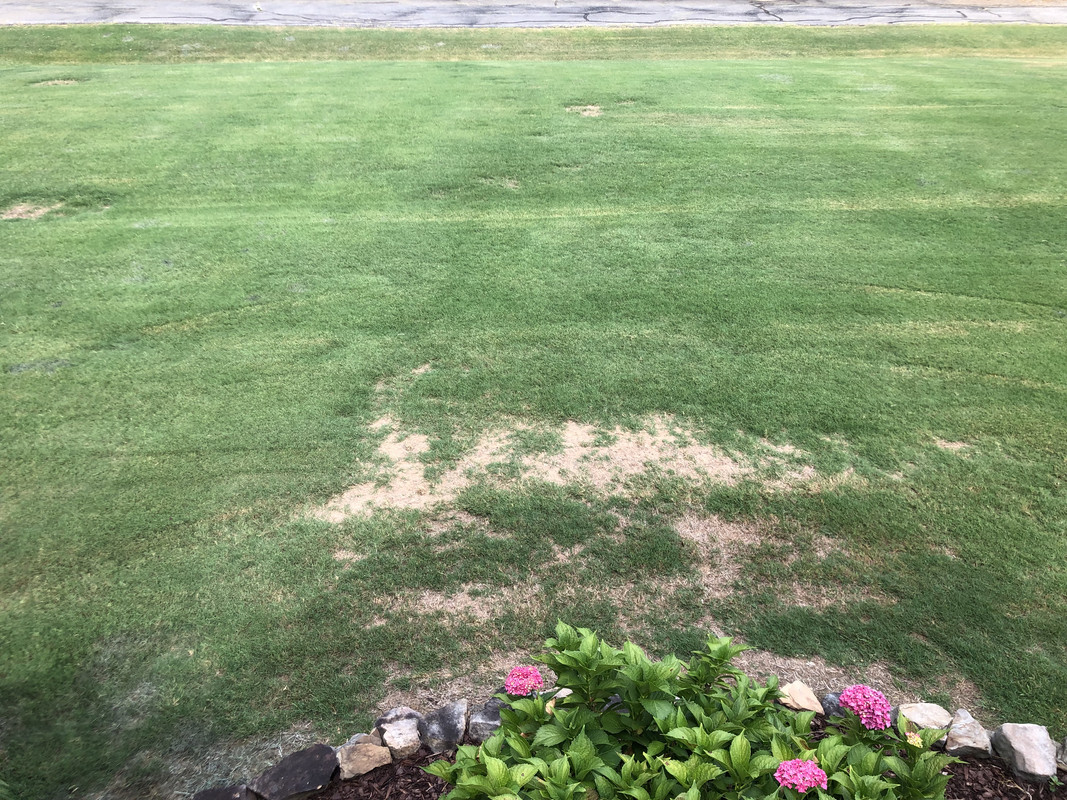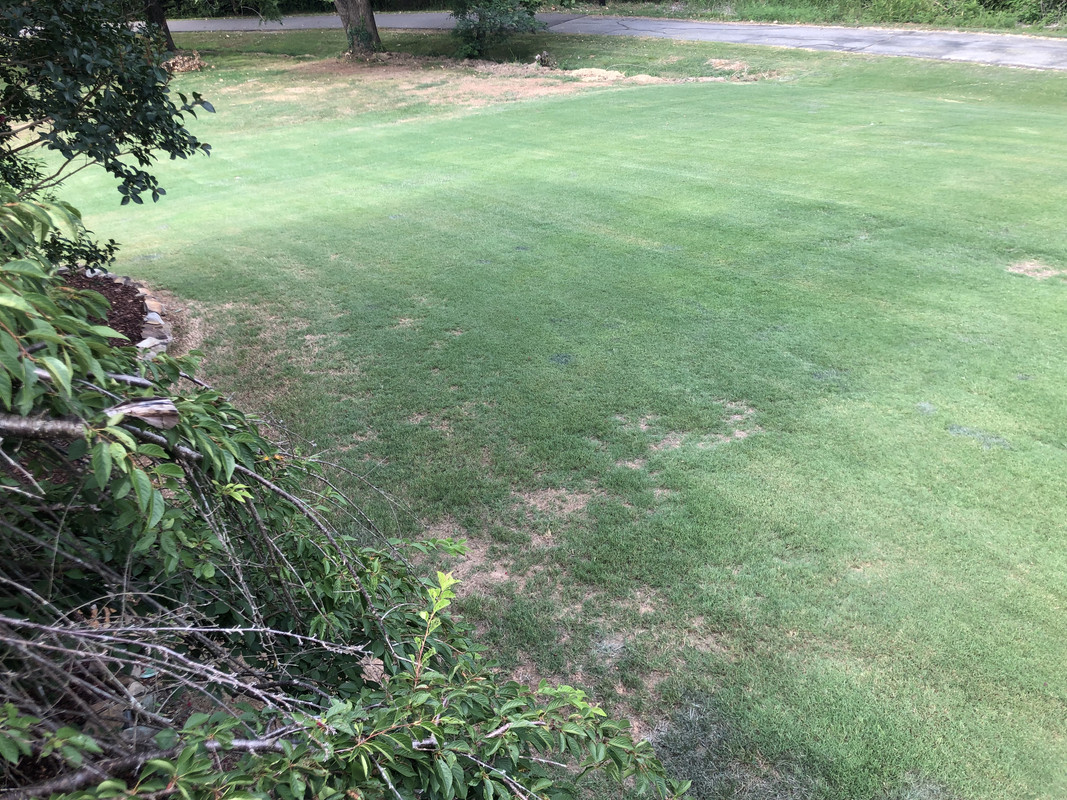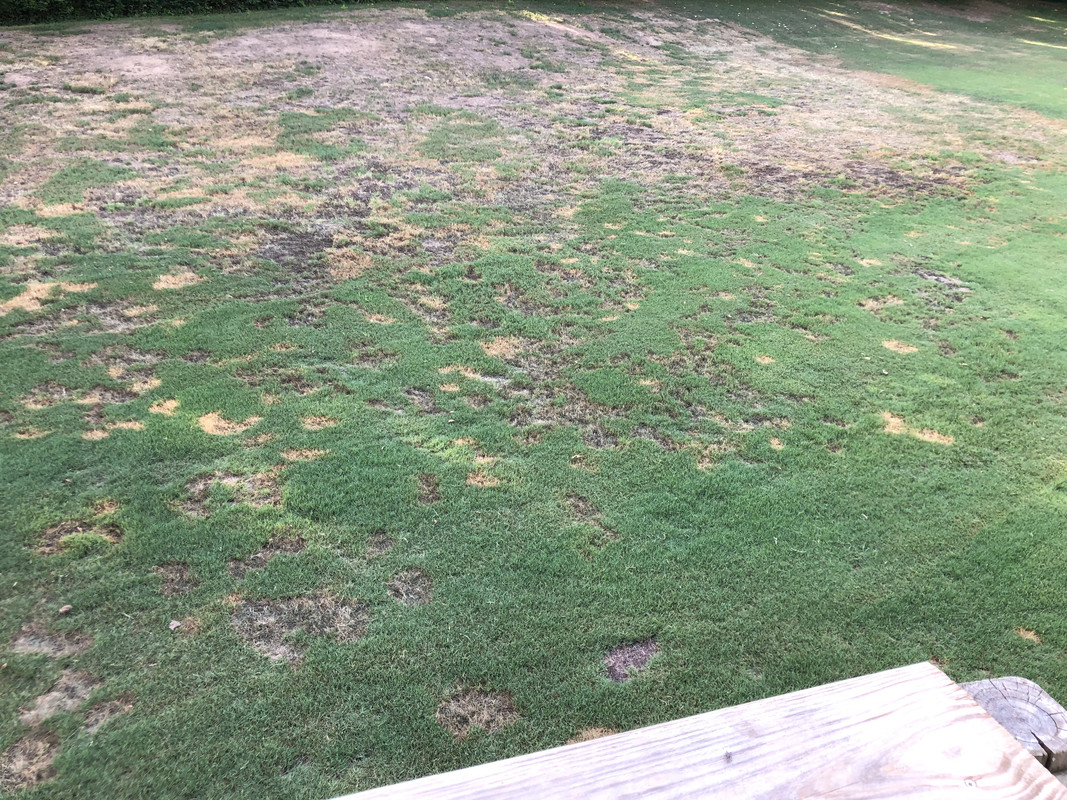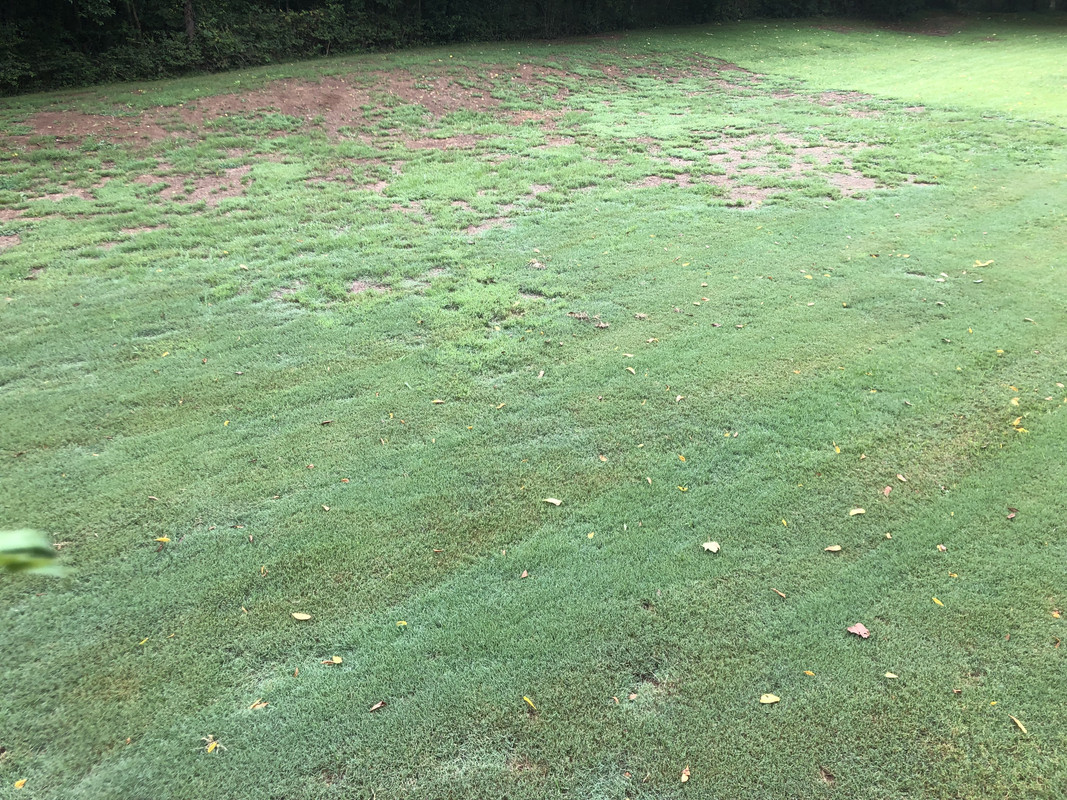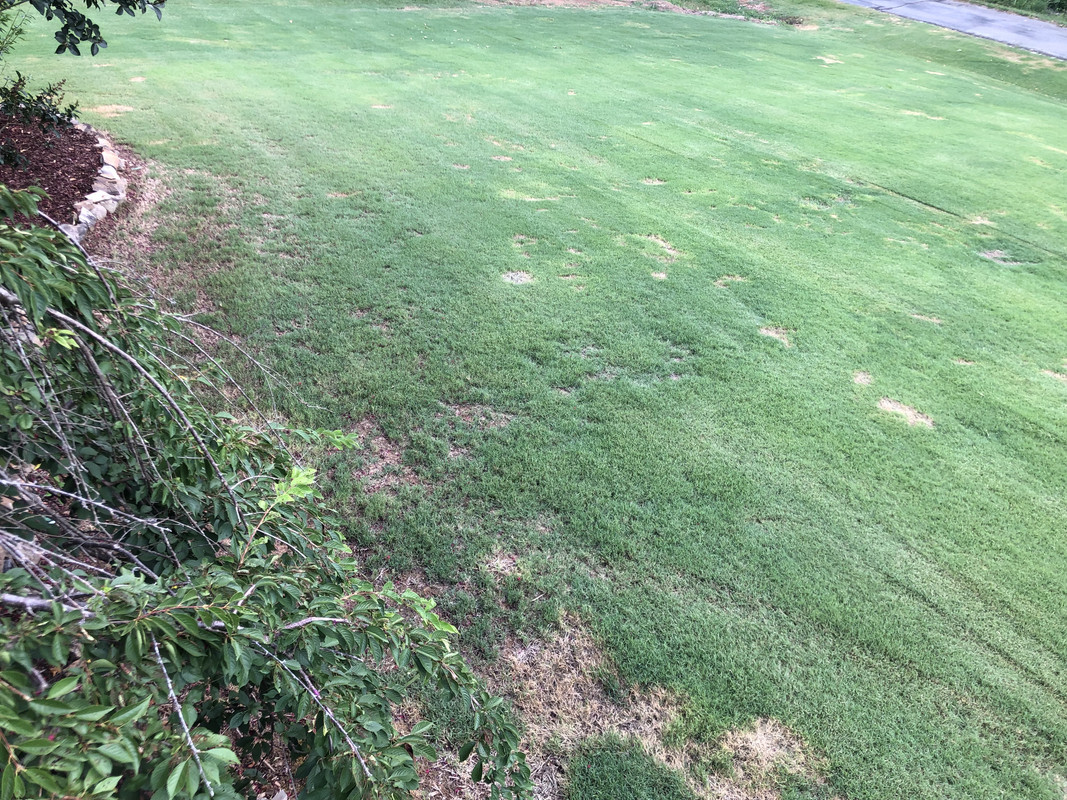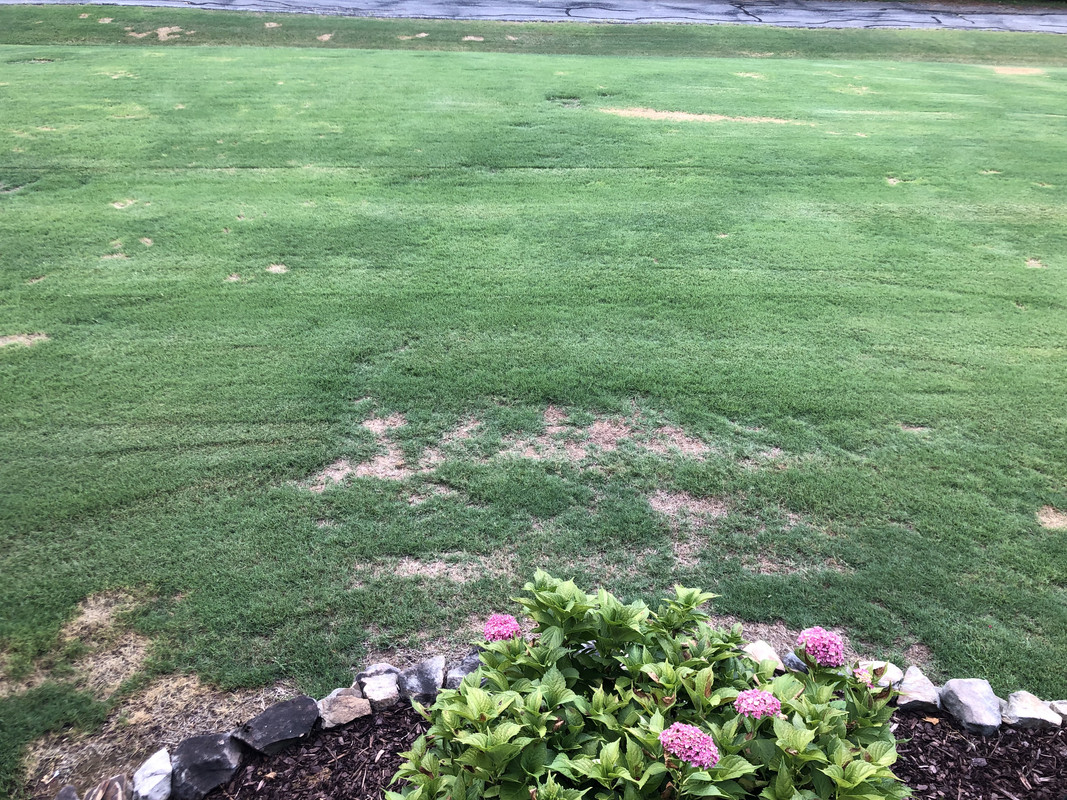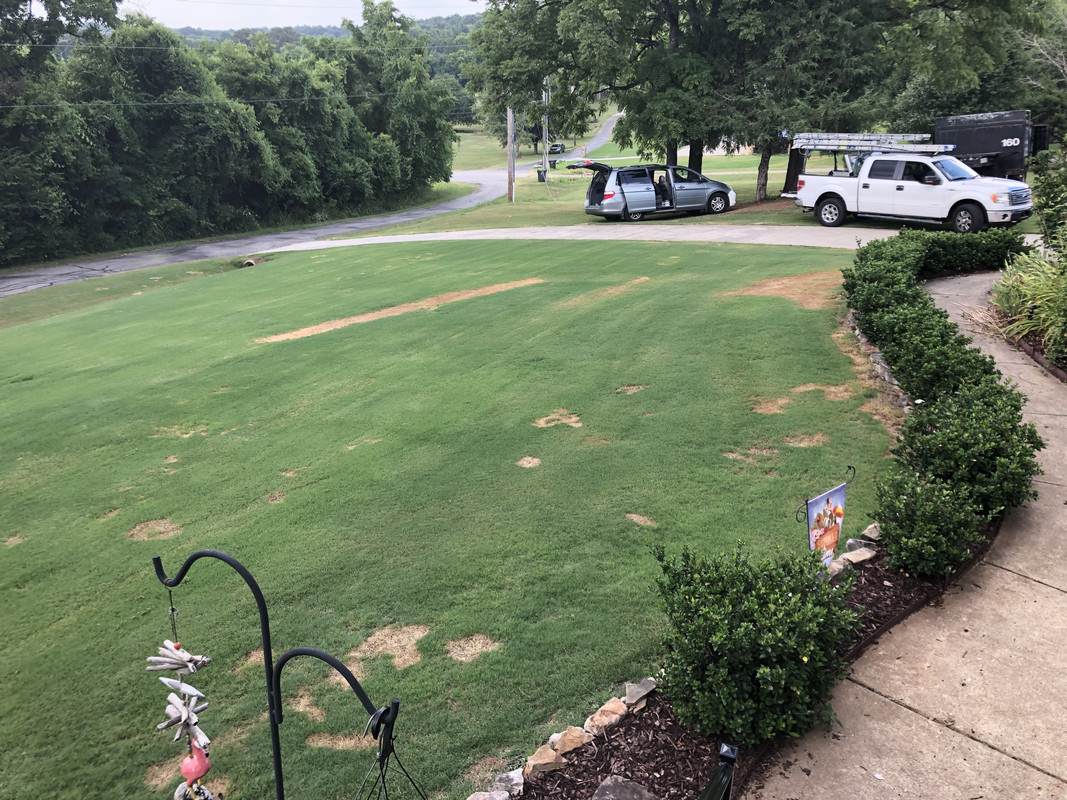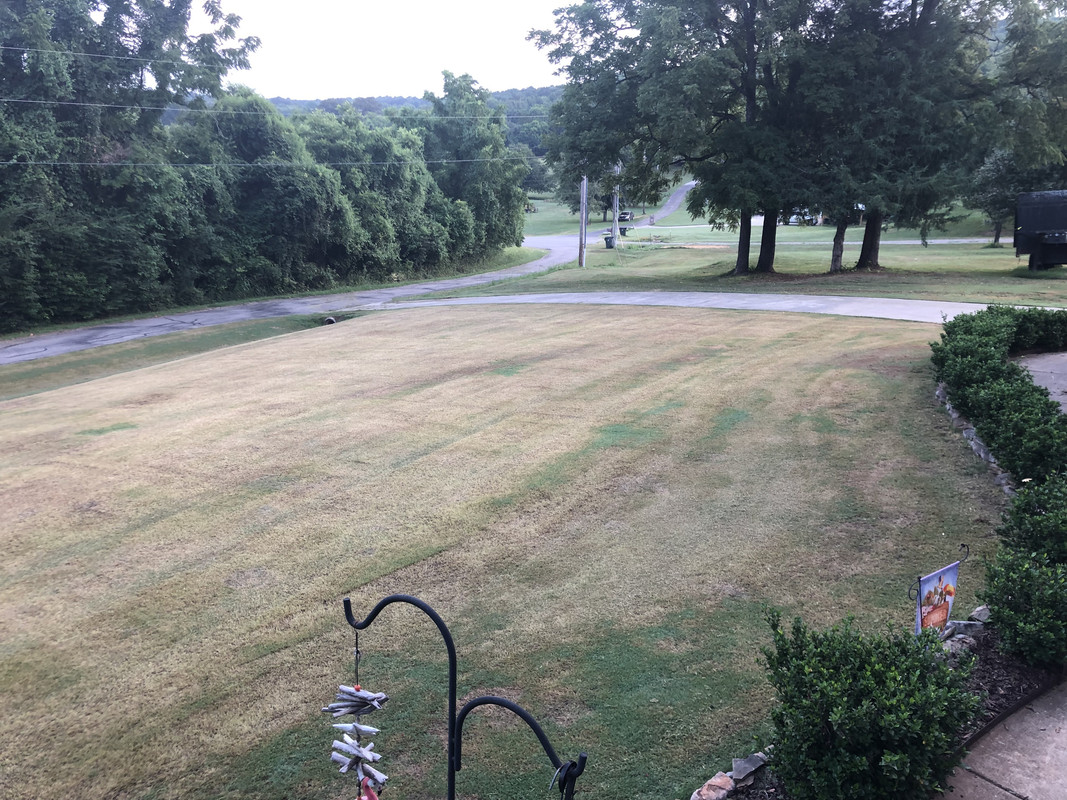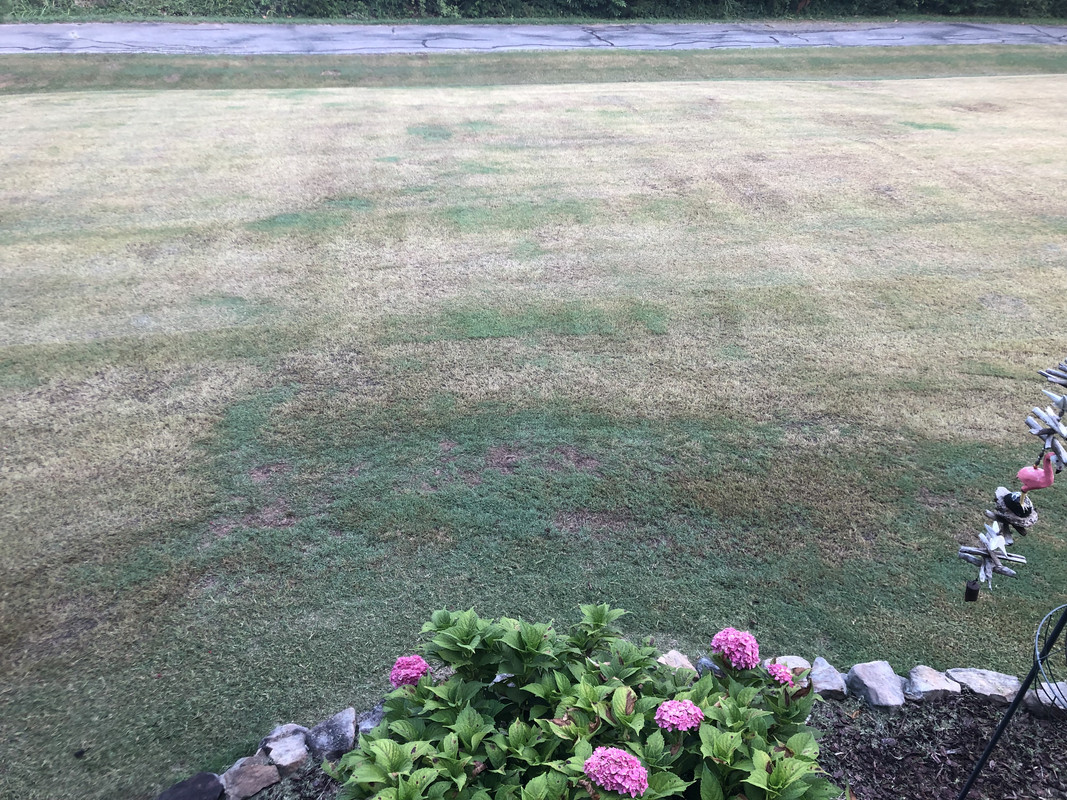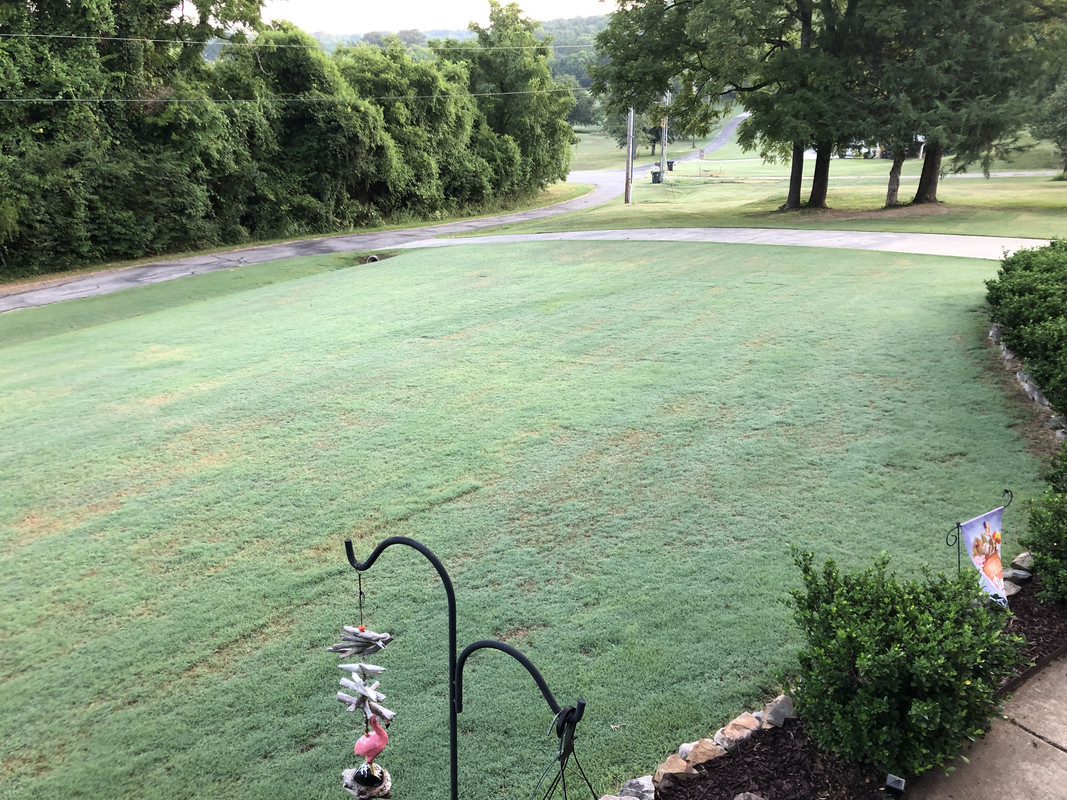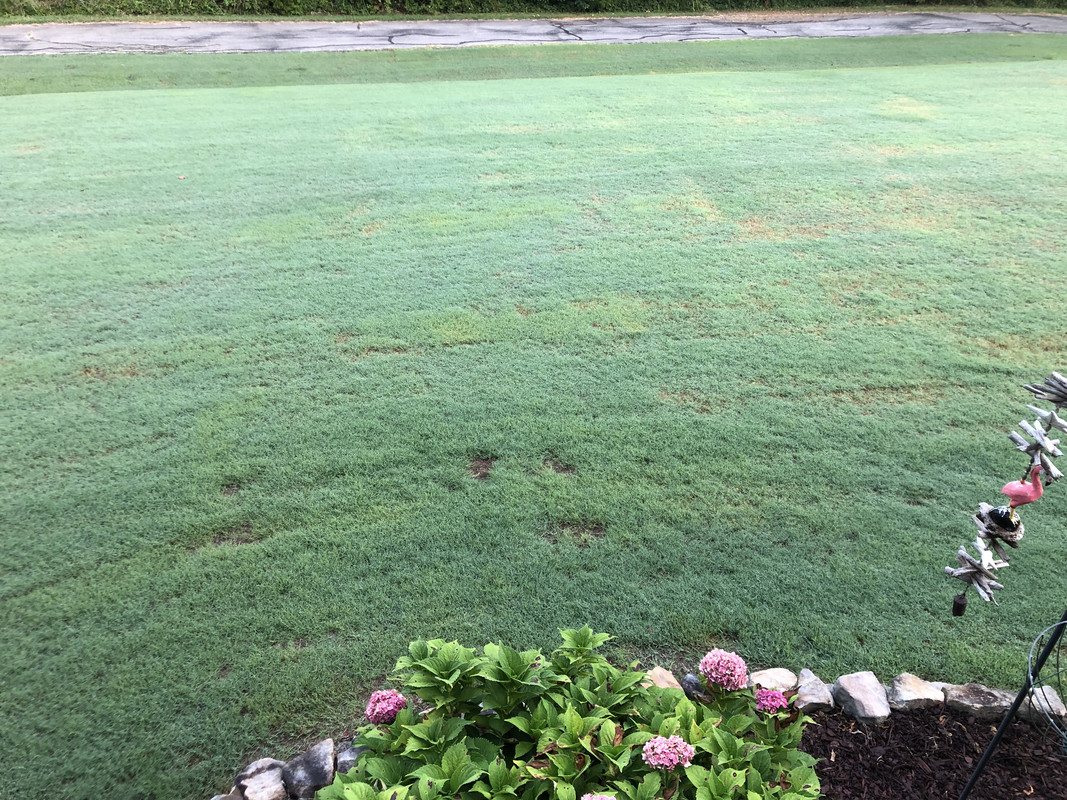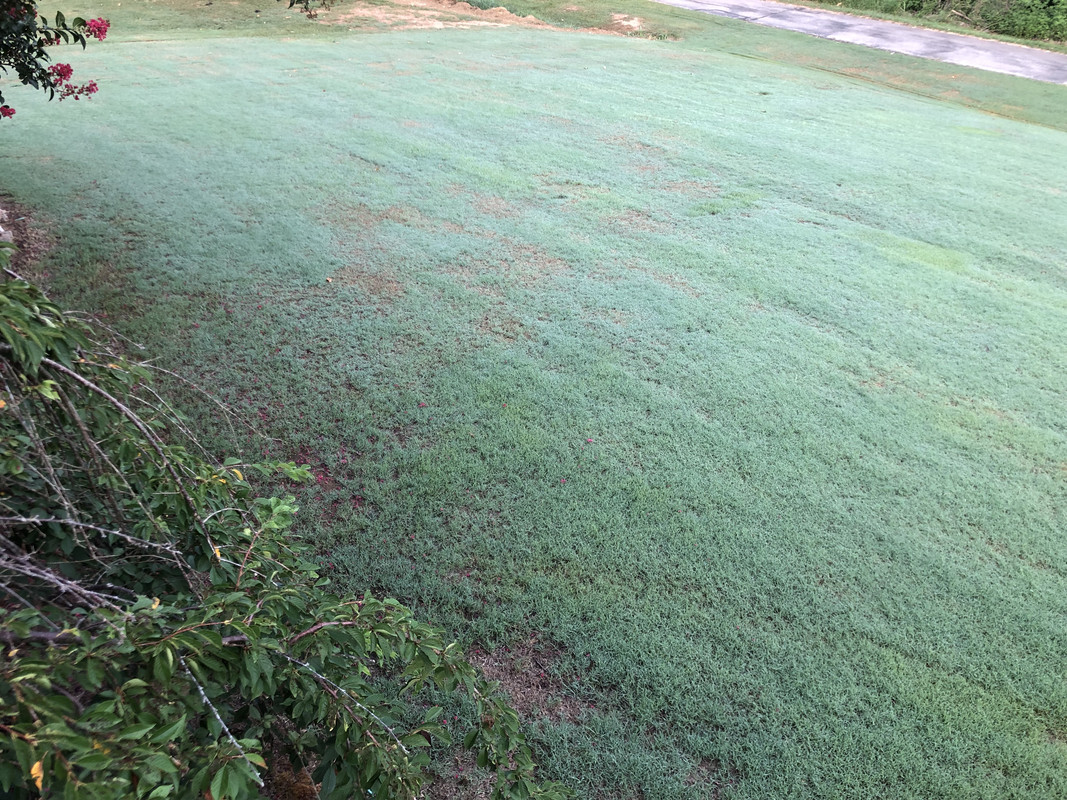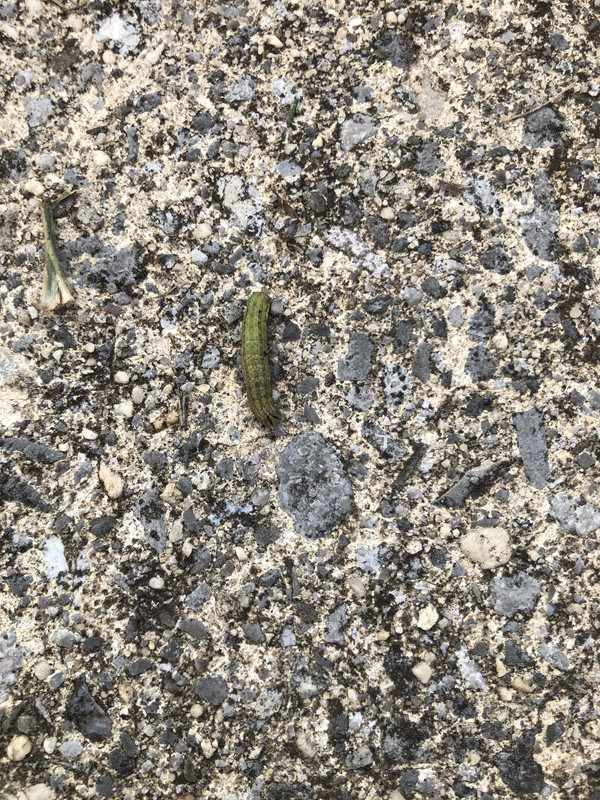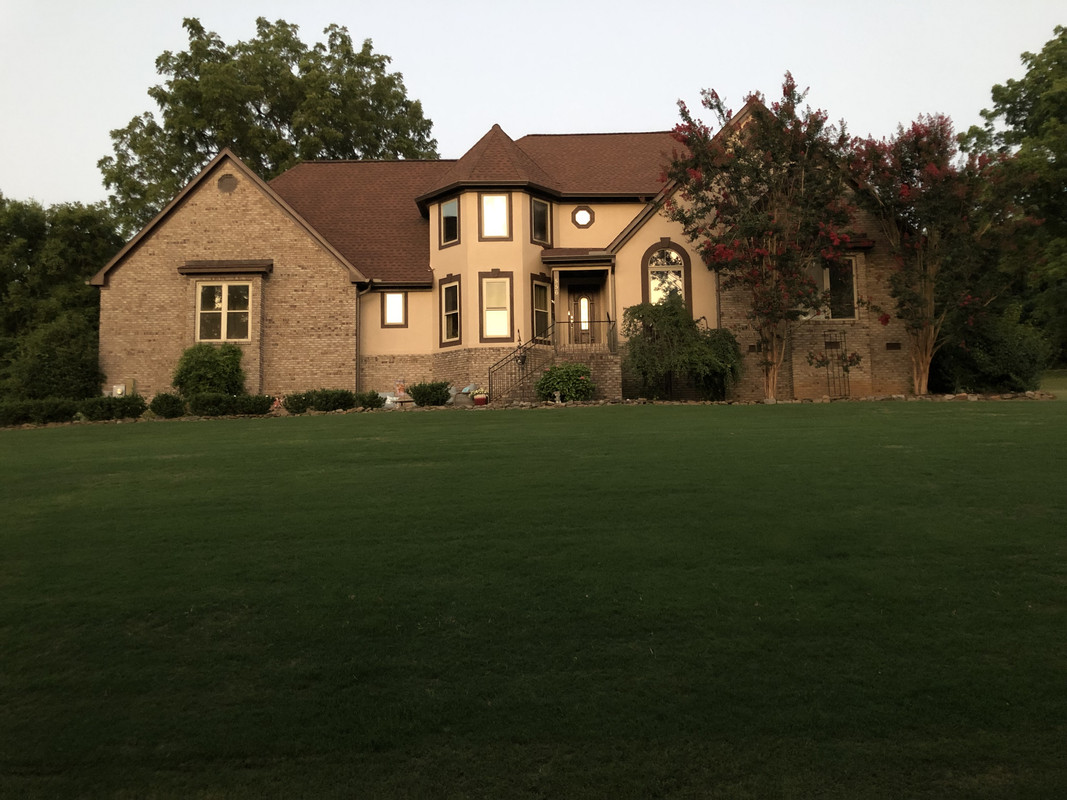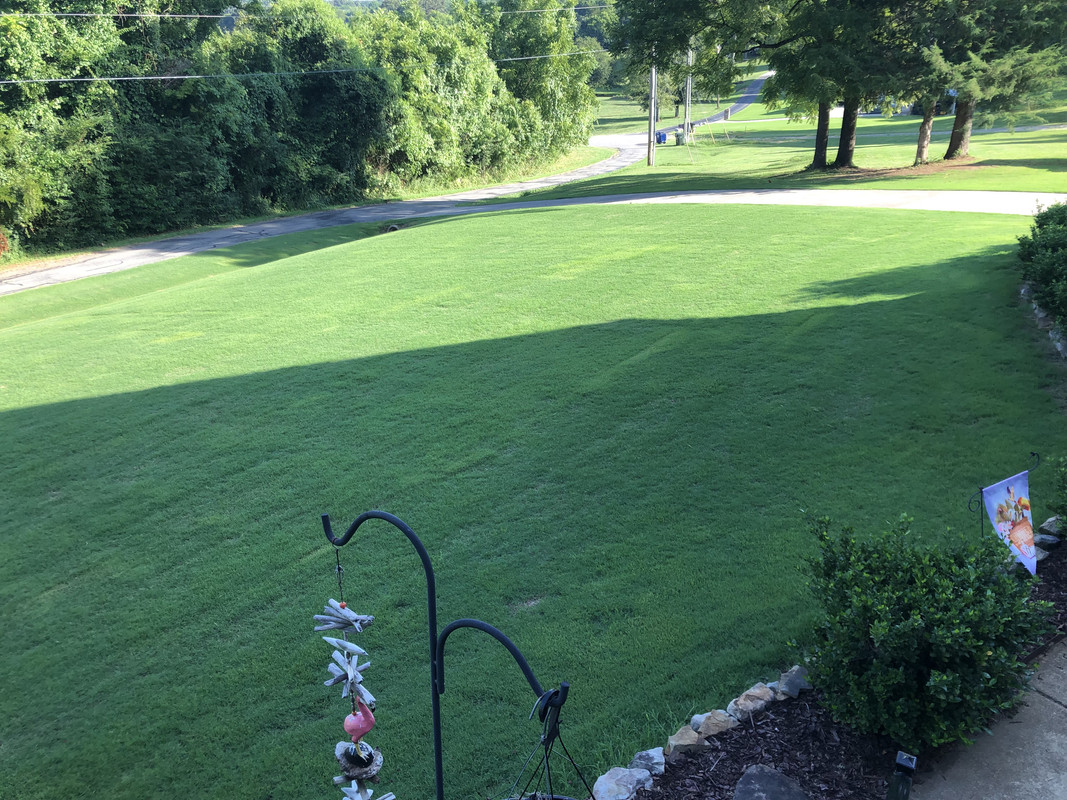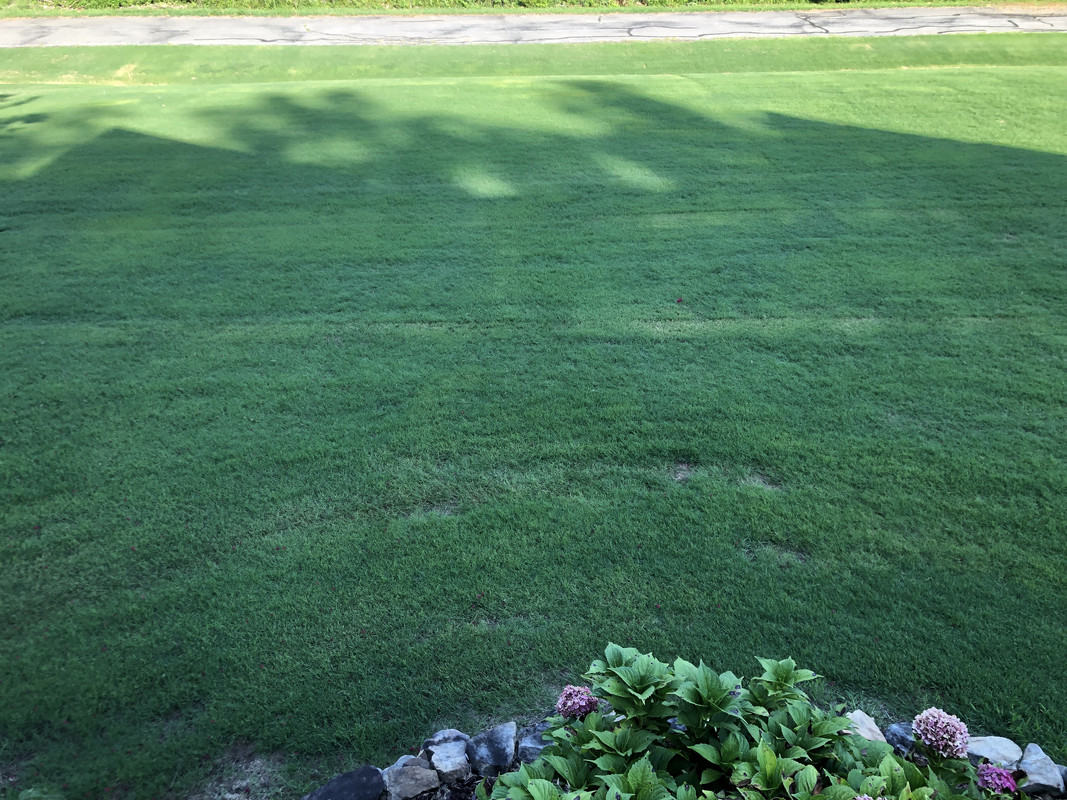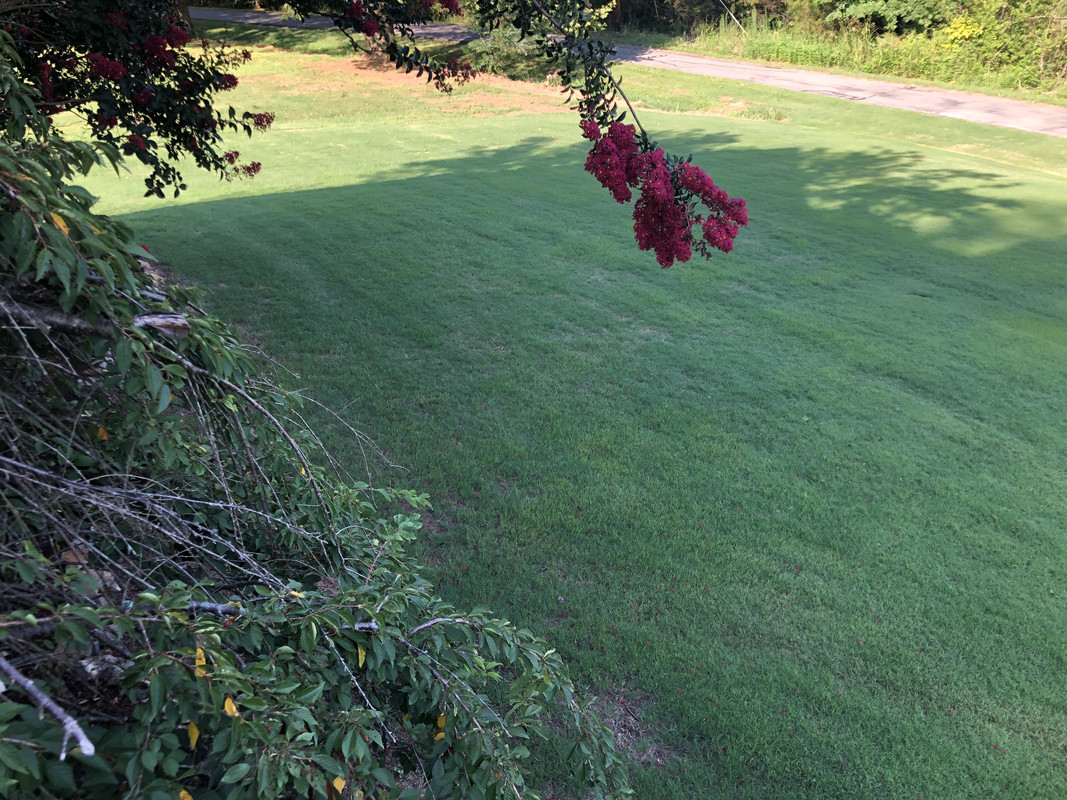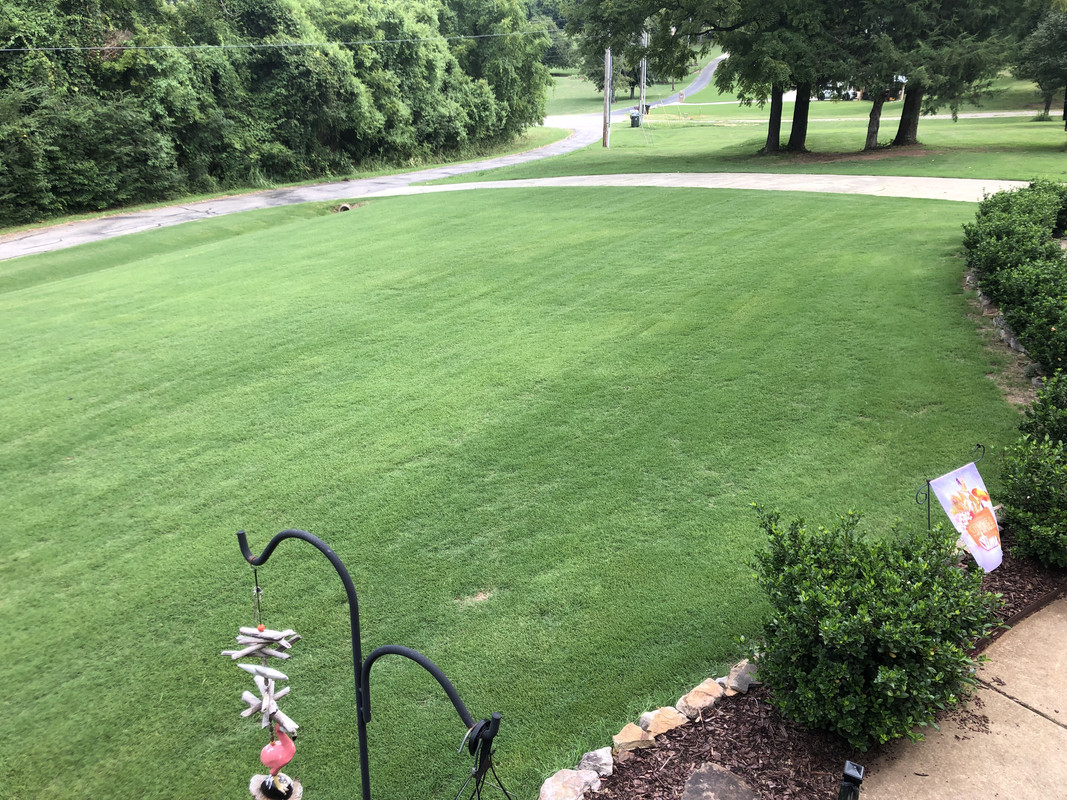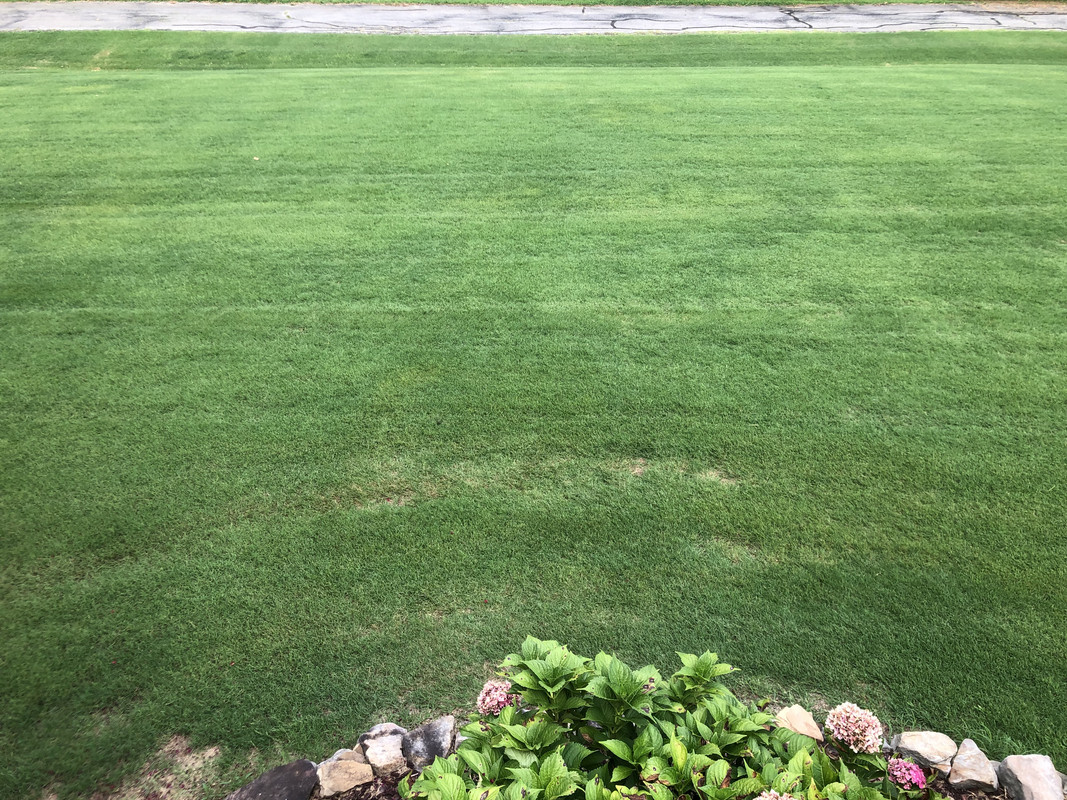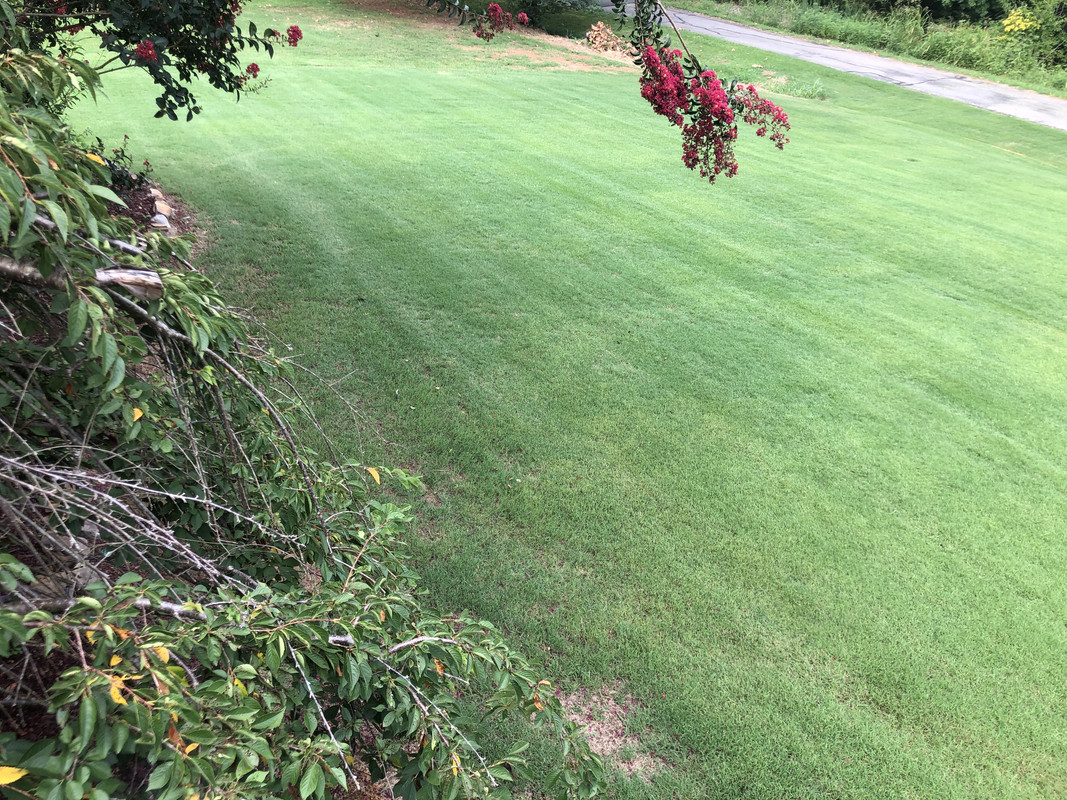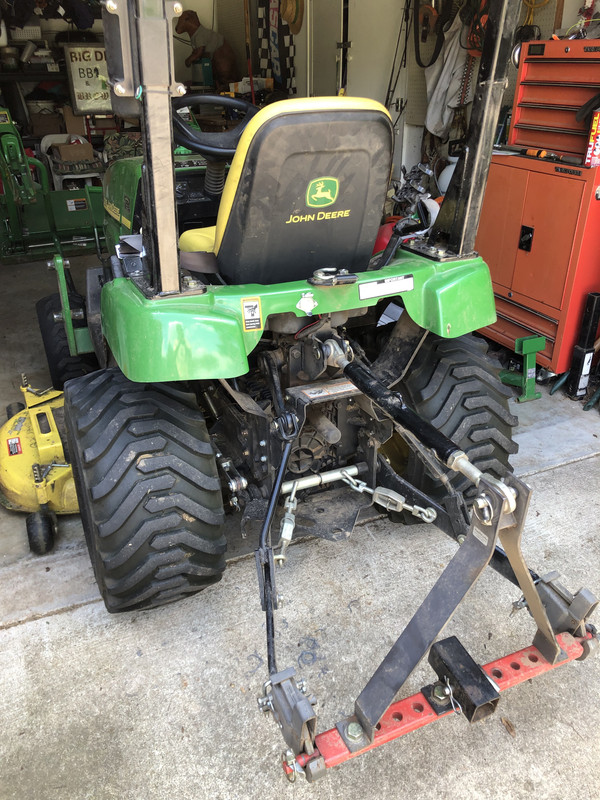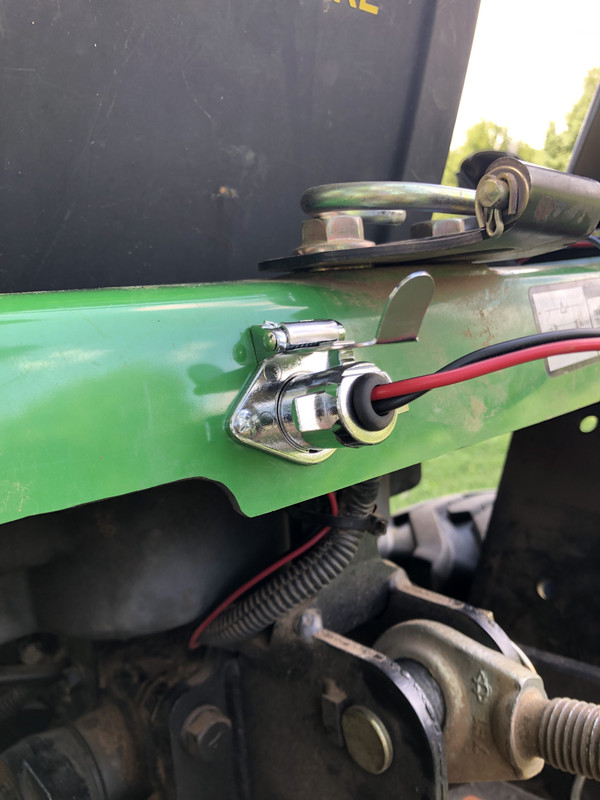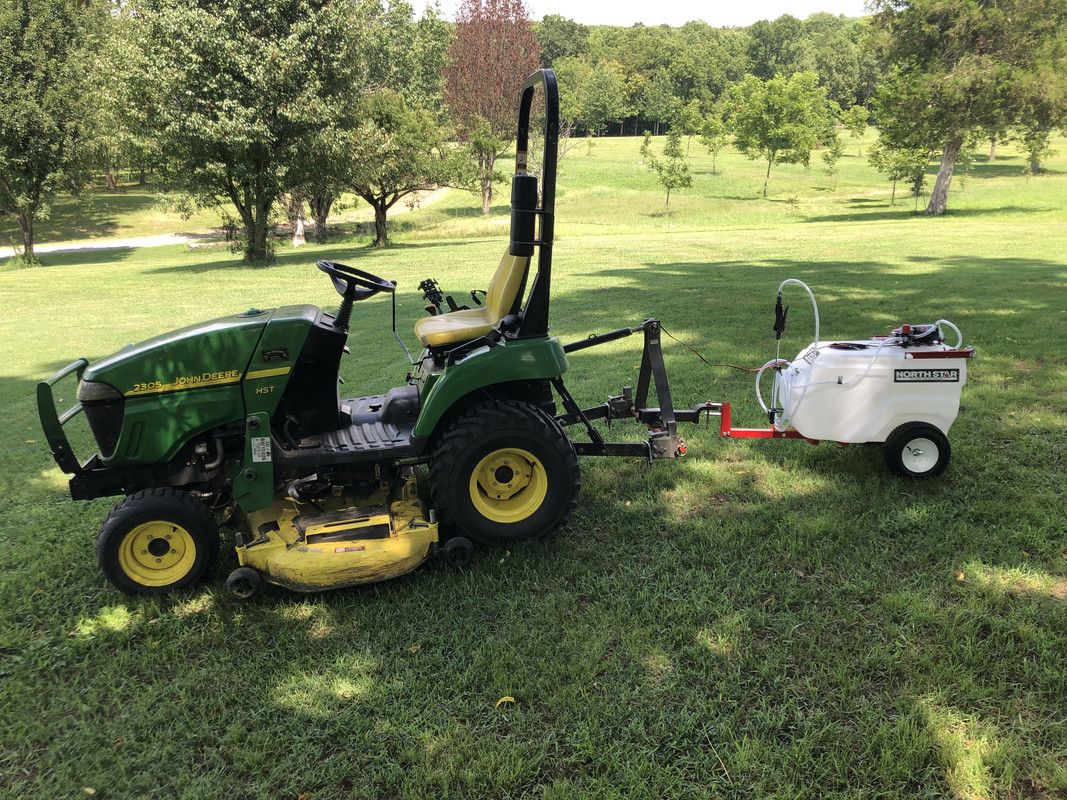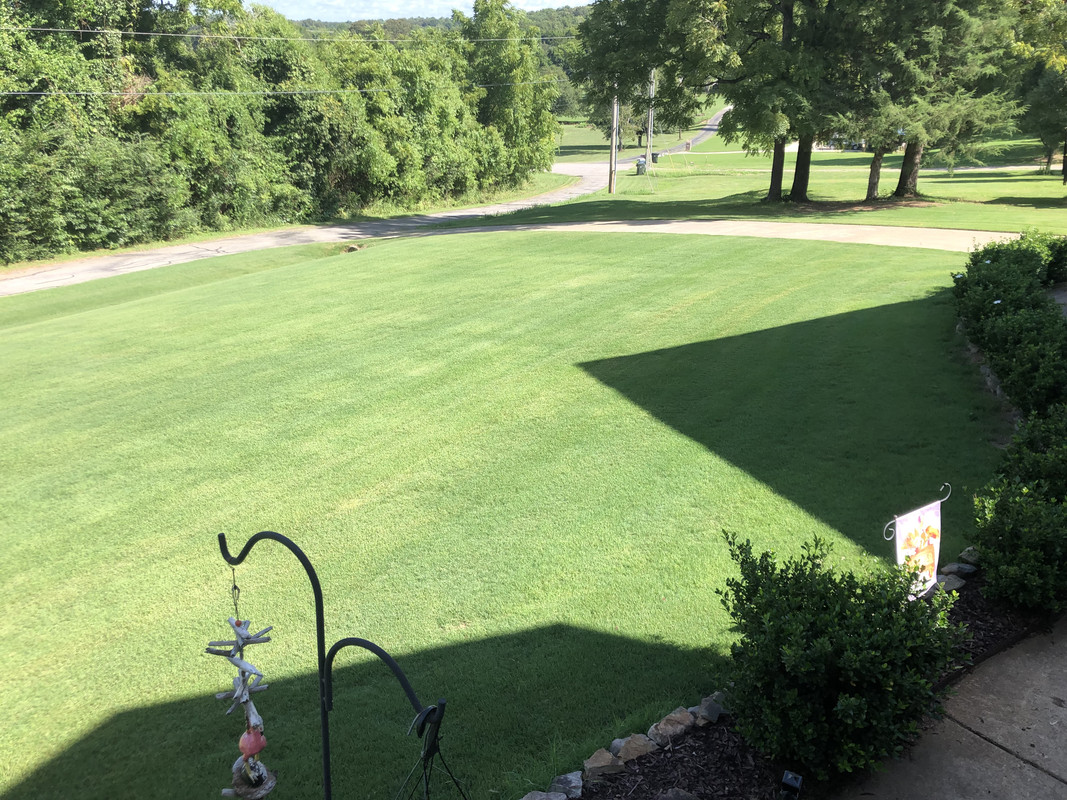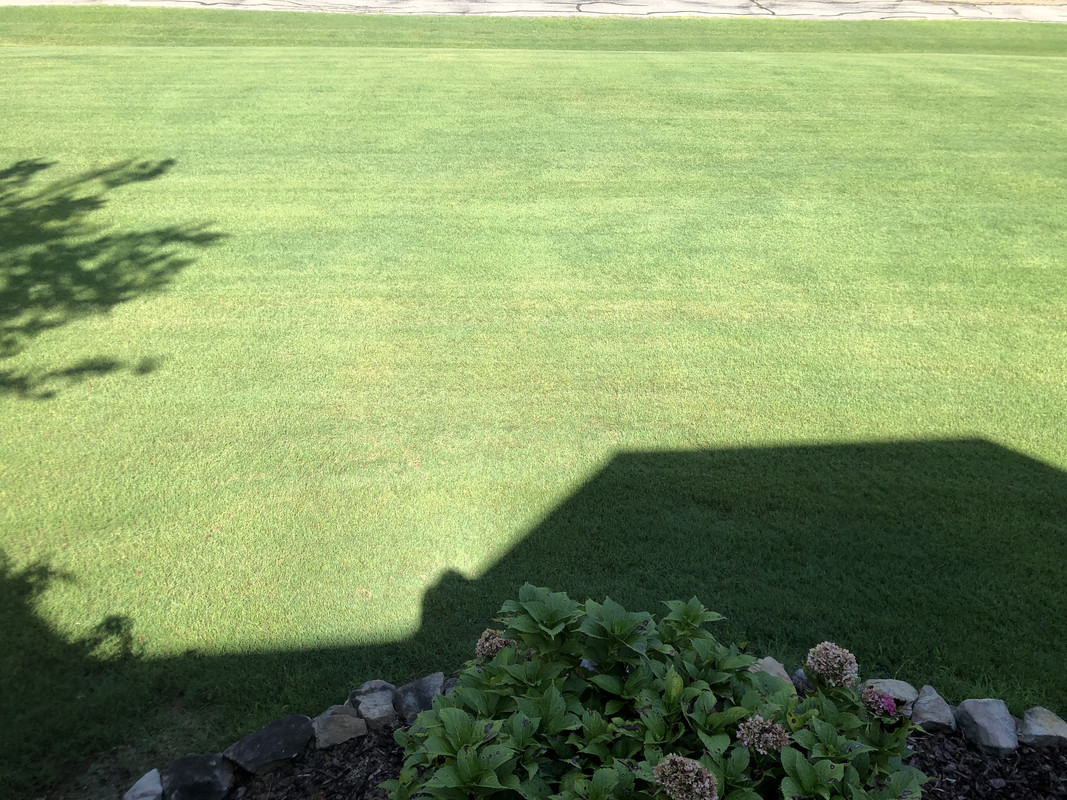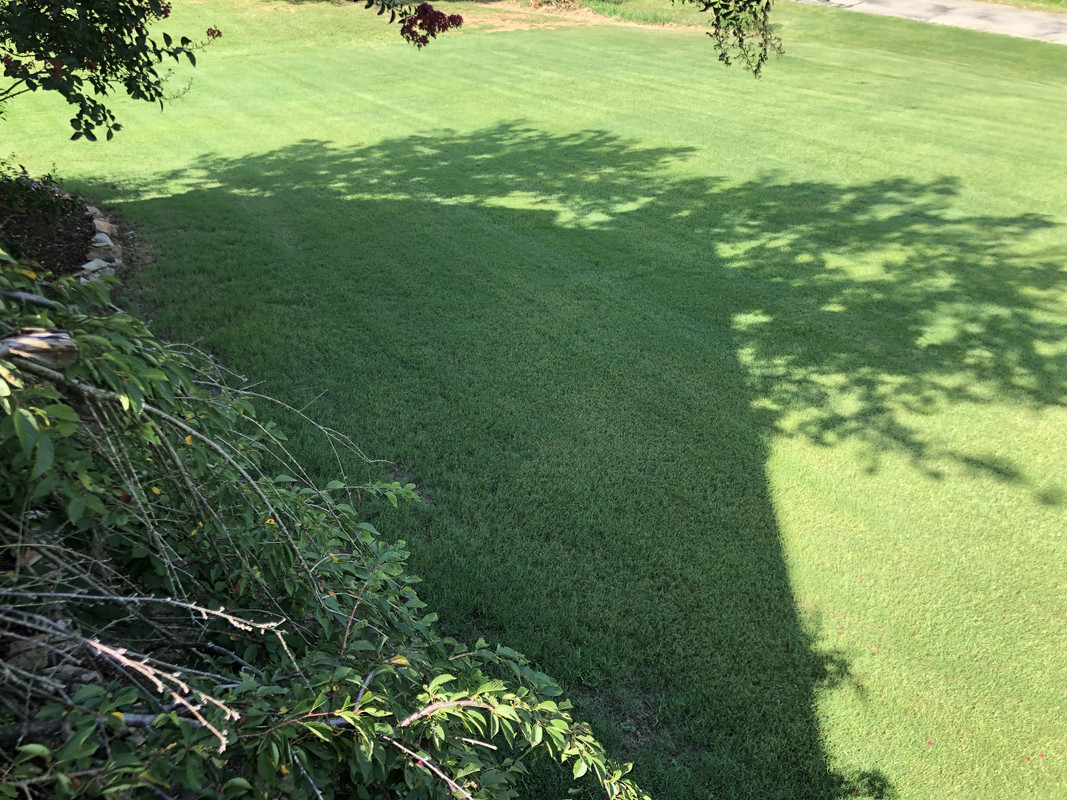I bought this house 15 yrs ago when I worked full time, was an avid golfer, and boater. Needless to say all three of those activities kept me away from lawn care so I adopted the 'if it's green it's lawn' approach. The yard was full of clover, dandelions, goose grass, poa, nutsedge, kalinga, dalisgrass, crabgrass, barngrass, etc. Among the weeds there was a little bit of Bermuda that was able to fend for itself. I mowed at 2.5-3", rarely edged or blew off the sidewalk or driveway, and only ran the string trimmer out of shame.
Fast forward to today's very different situation: my wife suffered a stroke so I took early retirement, sold the boat, and golf is a memory. I've decided that I need a hobby that keeps me close to home but out of the easy chair or the bottle so I started DIY lawn care this yr on 1.89 acres on the W side of Berry Mnt in NE Madison Co AL. I have decided to dedicate this season to refurbishing the landscape focusing primarily on the 10k sq ft front yard and 120 sq ft of flower beds, and secondarily on the remaining 72+k sq ft.
Apr '22 I started by scalping/sweeping, aerating/sweeping, watering, feeding, and mowing/sweeping the 10k front. I weeded and applied mulch in all the beds. I've made some mistakes - some of them expensive - that I'll just have to learn from which is what brought me here. I am a member of a few other forums which brought my knowledge up and flattened my learning curve in those areas so I look to this membership body for advice and knowledge.
So far:
I sprayed two applications of Image to kill off the Poa, Kalinga, Goosegrass, Crabgrass, and Nutsedge. This has resulted in some bare patches where the weeds were very well established and where I have compacted the ground with my R4 tractor tires. I mow at 1.25" now in an effort to train the Bermuda to spread laterally to fill in these bare spots. I have plans to replace the R4(s) with R3 turf tires. (A reel mower for the front 10k is just a distant dream right now.)
I applied Thick R Lawn around Easter which I found out was a mistake because it contains grass seed. I have no idea what kind of Bermuda I have but I am sure it's not the Highlander found in that bag. So, I am going to have a mixed lawn. The good news is I didn't burn the lawn and it seemed to help. It's yet to be seen how different what I seeded is to what was growing.
Then, I decided Scott's was too expensive long term and so I applied generic 10-10-10 fast release fertilizer and 4-3-0 all natural slow release fertilizer for a combination of .5 lb N/ 1k sq ft (.3 fast + .2 slow) around Memorial Day. That didn't go as well as planned. My grass yellowed so I watered, watered, watered in an effort to dilute the effect thinking the solution to pollution is dilution. It seems to be recovering slowly.
Here's my plan going forward: (All recommendations are welcome.)
Feeding:
Independence Day I will apply the fertilizer based on my soil sample recently submitted to Auburn University. I anticipate the results next week. I am leaning heavily towards .5 lb/1k Milorganite or a suitable substitute because it won't burn the grass. It's very difficult to get 1" of water on my lawn but if I concentrate on the front and let nature water the rest I might have a chance with a Milo-type application. I don't want a repeat of my Memorial Day application.
Labor Day I will repeat Independence Day if the results go well.
Insecticide:
My next application will be grub killer very soon due to sample patches revealing live grubs and years of June bug infestation. I may apply this to the entire 80k because my fruit trees and flowers get ravaged each year. I plan to use Bio Advance (DYLOX).
Herbicide:
Dallisgrass is my next Target.
The future weed plan is Prodiamine pre-emergent.
Fungicide:
I don't have a fungus plan yet. I want to use the wait and see approach. Again, recommendations welcome.
Baseline Apr ‘22 (ugly!):

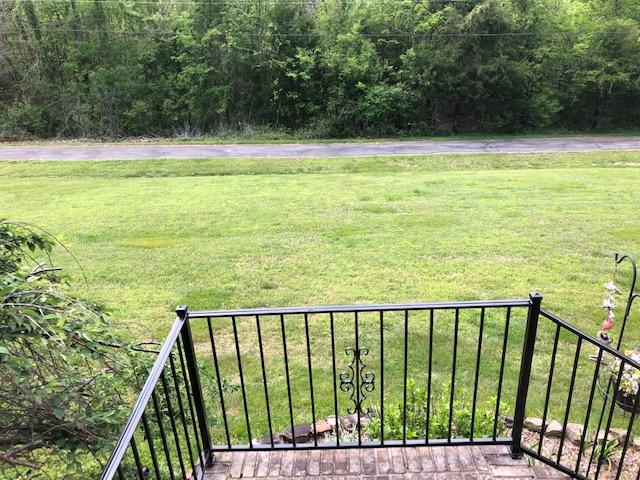
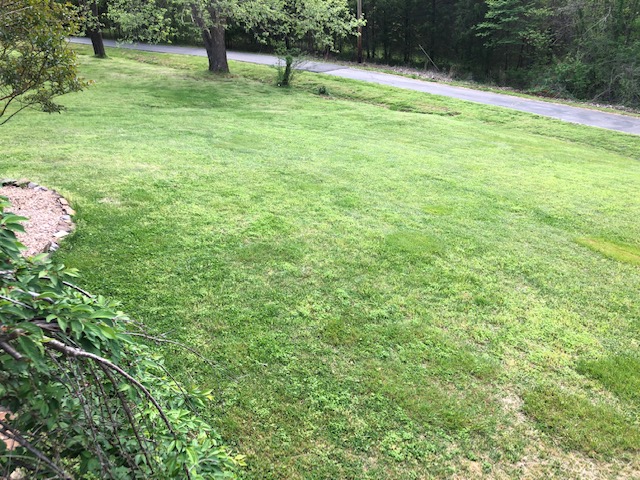
Today's HOC reset:
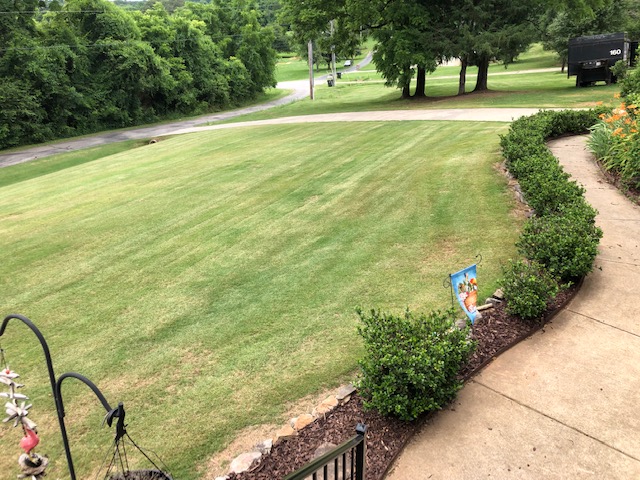

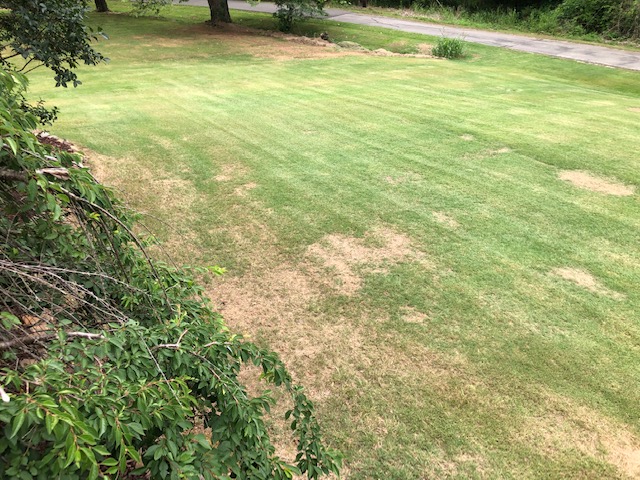
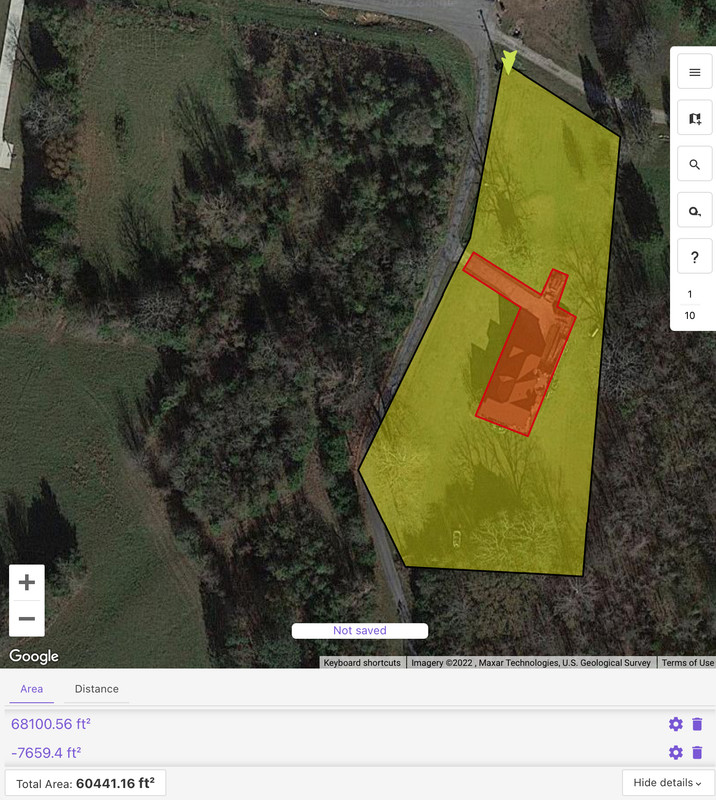
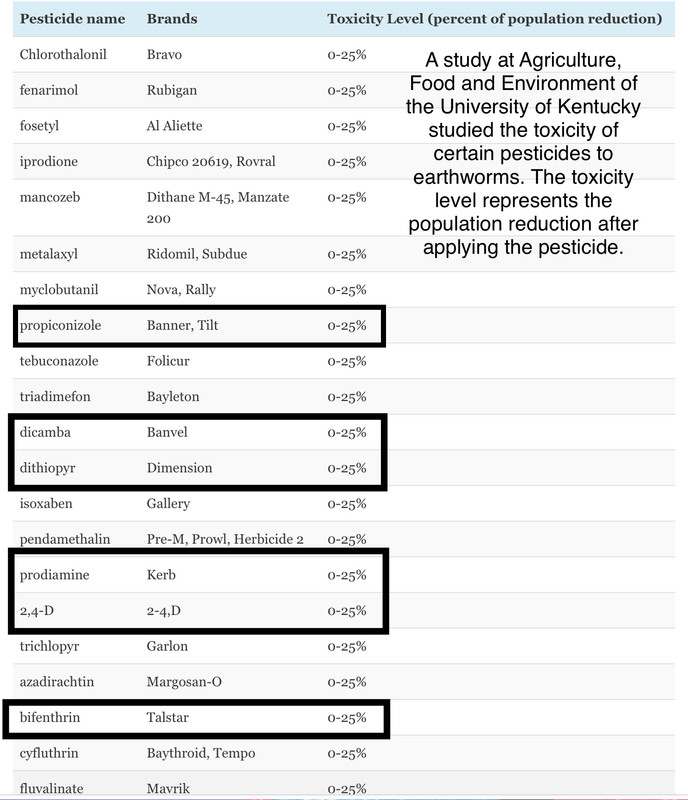
Fast forward to today's very different situation: my wife suffered a stroke so I took early retirement, sold the boat, and golf is a memory. I've decided that I need a hobby that keeps me close to home but out of the easy chair or the bottle so I started DIY lawn care this yr on 1.89 acres on the W side of Berry Mnt in NE Madison Co AL. I have decided to dedicate this season to refurbishing the landscape focusing primarily on the 10k sq ft front yard and 120 sq ft of flower beds, and secondarily on the remaining 72+k sq ft.
Apr '22 I started by scalping/sweeping, aerating/sweeping, watering, feeding, and mowing/sweeping the 10k front. I weeded and applied mulch in all the beds. I've made some mistakes - some of them expensive - that I'll just have to learn from which is what brought me here. I am a member of a few other forums which brought my knowledge up and flattened my learning curve in those areas so I look to this membership body for advice and knowledge.
So far:
I sprayed two applications of Image to kill off the Poa, Kalinga, Goosegrass, Crabgrass, and Nutsedge. This has resulted in some bare patches where the weeds were very well established and where I have compacted the ground with my R4 tractor tires. I mow at 1.25" now in an effort to train the Bermuda to spread laterally to fill in these bare spots. I have plans to replace the R4(s) with R3 turf tires. (A reel mower for the front 10k is just a distant dream right now.)
I applied Thick R Lawn around Easter which I found out was a mistake because it contains grass seed. I have no idea what kind of Bermuda I have but I am sure it's not the Highlander found in that bag. So, I am going to have a mixed lawn. The good news is I didn't burn the lawn and it seemed to help. It's yet to be seen how different what I seeded is to what was growing.
Then, I decided Scott's was too expensive long term and so I applied generic 10-10-10 fast release fertilizer and 4-3-0 all natural slow release fertilizer for a combination of .5 lb N/ 1k sq ft (.3 fast + .2 slow) around Memorial Day. That didn't go as well as planned. My grass yellowed so I watered, watered, watered in an effort to dilute the effect thinking the solution to pollution is dilution. It seems to be recovering slowly.
Here's my plan going forward: (All recommendations are welcome.)
Feeding:
Independence Day I will apply the fertilizer based on my soil sample recently submitted to Auburn University. I anticipate the results next week. I am leaning heavily towards .5 lb/1k Milorganite or a suitable substitute because it won't burn the grass. It's very difficult to get 1" of water on my lawn but if I concentrate on the front and let nature water the rest I might have a chance with a Milo-type application. I don't want a repeat of my Memorial Day application.
Labor Day I will repeat Independence Day if the results go well.
Insecticide:
My next application will be grub killer very soon due to sample patches revealing live grubs and years of June bug infestation. I may apply this to the entire 80k because my fruit trees and flowers get ravaged each year. I plan to use Bio Advance (DYLOX).
Herbicide:
Dallisgrass is my next Target.
The future weed plan is Prodiamine pre-emergent.
Fungicide:
I don't have a fungus plan yet. I want to use the wait and see approach. Again, recommendations welcome.
Baseline Apr ‘22 (ugly!):



Today's HOC reset:







